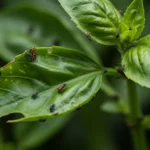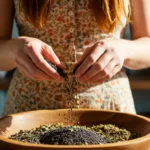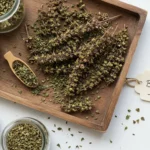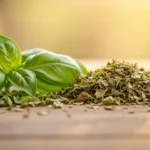Eight years ago, I, Kalsoom Imran, remember staring at a single, sad basil seedling, convinced I’d never master gardening. Now, after countless triumphs and a few comical plant failures, I can confidently say, learning how to plant basil in a pot is surprisingly simple, and I’m excited to share the secrets.
Why Choose Container Gardening for Basil?
Benefits of Growing Basil in Containers
Let me tell you, there’s something truly magical about snipping fresh basil leaves right from your little garden, especially when that garden is just a pot away. I’ve found that growing basil in containers offers so many advantages. For starters, it’s incredibly convenient. Whether you have a sprawling backyard or a tiny apartment balcony, you can enjoy fresh herbs.
Plus, you have complete control over the soil, sunlight, and watering, which can lead to healthier, happier plants. And honestly, there’s a certain satisfaction in nurturing something from a tiny seedling to a fragrant, leafy plant. It’s like having a little piece of summer right there with you.
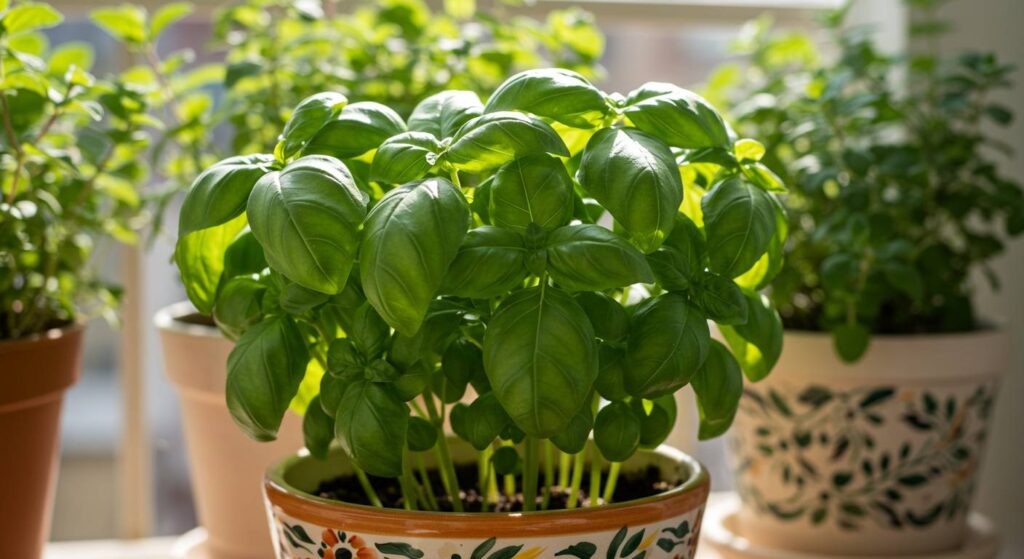
Indoor vs. Outdoor Basil Pot Considerations
Deciding whether to keep your basil in pots indoors or outdoors really depends on your space and climate. If you live in an area with harsh winters, keeping your basil inside is a no-brainer. You can still enjoy fresh basil even when the snow is falling. On the other hand, if you have a sunny balcony or patio, your basil will likely thrive outdoors during the warmer months.
Just remember, basil loves sunlight, so if you’re keeping it indoors, you’ll need to provide enough light, either from a sunny window or a grow light. The beauty of container basil growing is that it’s flexible. You can move your pots around to chase the sun or bring them indoors when the weather turns.
Gathering Your Supplies for Planting Basil in Pots
Choosing the Right Pot for Your Basil Plant
The pot you choose for your basil is more important than you might think. It needs to be the right size and have adequate drainage. I usually go for a pot that’s at least 6-8 inches in diameter and depth for a single plant. This gives the roots enough room to grow.
If you’re planning on planting basil in pots in multiples, you’ll need a larger container. Terracotta pots are great because they’re breathable, but plastic pots work just fine too. Just make sure whatever you choose has drainage holes at the bottom, because soggy roots are a basil’s worst enemy.
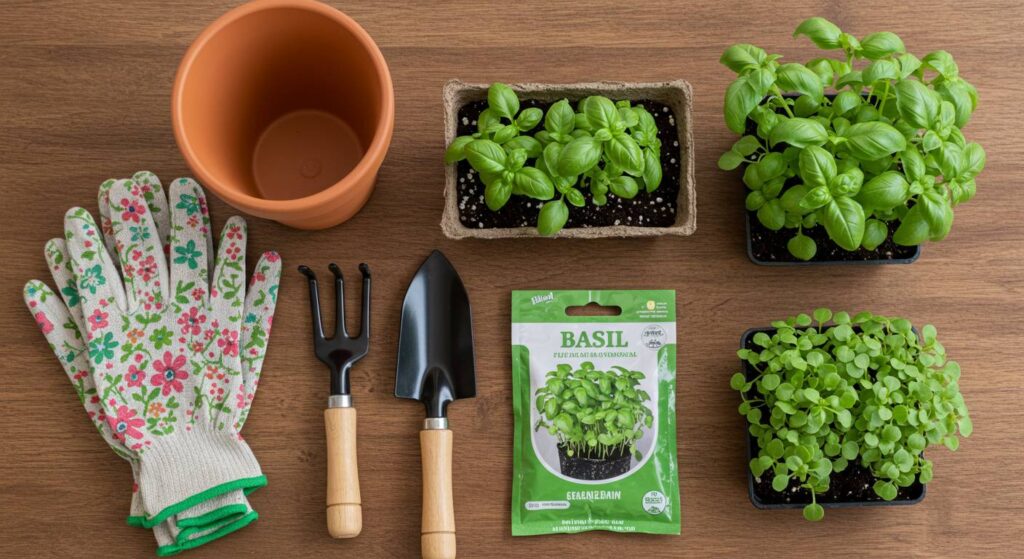
Selecting the Best Potting Mix for Basil
The soil you use for your basil is just as important as the pot. Don’t just grab any old dirt from your yard. Basil prefers well-draining soil that’s rich in organic matter. I always opt for a good quality potting mix, never garden soil.
Garden soil can become compacted in containers, which can suffocate the roots. Look for a mix that contains peat moss, perlite, and vermiculite. These ingredients help retain moisture while ensuring good drainage. You can even add some compost to the mix to give your basil an extra boost of nutrients. The right soil is crucial for healthy basil plant care in pots.
Essential Tools for Potting Basil Plant
You don’t need a lot of fancy tools to get started with potting basil plant. A small trowel or hand shovel will be helpful for scooping soil and creating planting holes. A watering can with a gentle spout is ideal for watering without disturbing the soil. And, of course, a pair of gardening gloves can keep your hands clean.
If you’re starting from seeds, you might want a small spray bottle to mist the soil. That’s about it! It’s amazing how little you need to start your little herb garden.
Step-by-Step: How to Put Basil in a Pot
Preparing Your Pot for Planting Basil
Before you even think about putting your basil in the pot, you need to prep it. Start by making sure your pot is clean. If it’s a used pot, give it a good scrub with soapy water. Then, place a layer of gravel or broken pottery at the bottom of the pot to help with drainage. This is especially important if your pot has only one drainage hole.
Next, fill the pot about two-thirds full with your potting mix. Don’t pack it down too tightly, because you want the roots to be able to spread easily. Now you’re ready for the fun part: how to put basil in a pot.

Planting Basil Seedlings or Transplants
If you’re starting with seedlings or transplants, gently remove them from their original container. I like to loosen the soil around the roots a bit before placing them in the new pot. Create a small hole in the potting mix, and carefully place the basil plant in it.
Make sure the top of the root ball is level with the surface of the soil. Fill in the surrounding area with more potting mix and gently pat it down. Don’t bury the stem of the plant too deep, as this can cause rot. If you’re starting from seeds, follow the instructions on the seed packet for planting depth and spacing.
How to Plant Basil in a Container: Detailed Instructions
Okay, let’s break down the basil pot planting instructions step by step. First, make sure you have your pot, potting mix, and basil seedlings or seeds ready. Fill the pot about two-thirds full with your potting mix. If you’re using seedlings, create a small hole in the center of the pot.
Gently remove the seedling from its container and place it in the hole. If you’re using seeds, sow them according to the package instructions. Cover the seedlings or seeds with a thin layer of soil, and gently water the pot. Place the pot in a sunny spot. Now, you’ve successfully planted your basil in a container!
Basil in Pots Tips for Success
Watering Your Potted Basil Plant
Watering is crucial for healthy basil, but it’s also where many people go wrong. Overwatering can lead to root rot, while underwatering can cause the plant to wilt. The key is to water thoroughly when the top inch of soil feels dry to the touch.
I like to water deeply until I see water draining out of the bottom of the pot. This ensures that the roots get enough moisture. Avoid getting water on the leaves, as this can encourage fungal diseases. And remember, the frequency of watering will depend on the weather and how quickly the soil dries out.
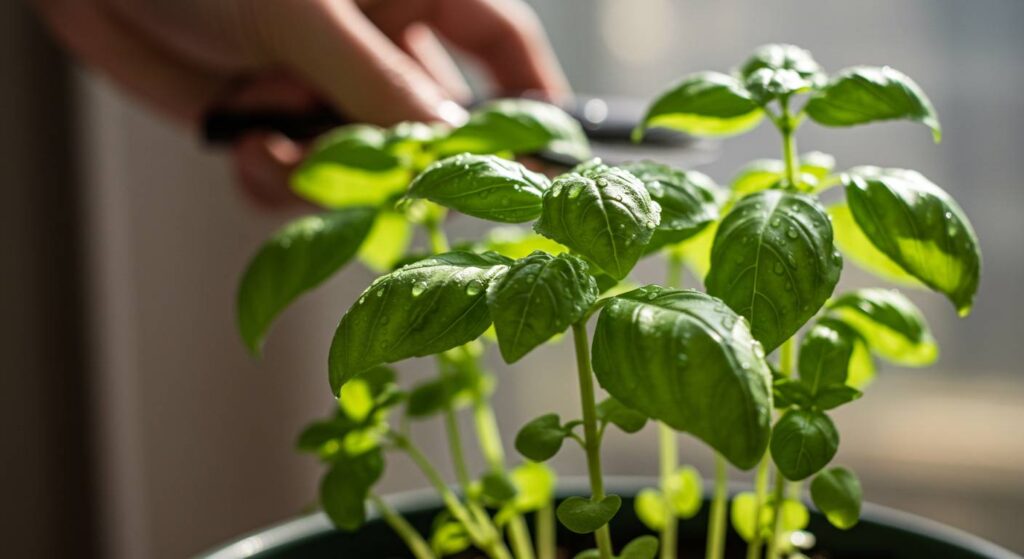
Sunlight Requirements for Growing Basil in Containers
Basil is a sun-loving herb, and it needs at least 6-8 hours of sunlight per day to thrive. If you’re growing your basil indoors, place it near a south-facing window where it will get the most light. If you don’t have enough natural light, you might need to supplement with a grow light.
Outdoors, find a spot that gets plenty of sun throughout the day. If you live in a very hot climate, you might need to provide some afternoon shade to prevent the leaves from scorching. The right amount of sunlight is essential for healthy basil growing guide for pots.
Feeding Your Basil Plant in a Pot
Basil is not a heavy feeder, but it does benefit from regular fertilization. I like to use a balanced liquid fertilizer diluted to half strength every 2-4 weeks. You can also use a slow-release granular fertilizer when you plant your basil.
Just follow the instructions on the package. Avoid over-fertilizing, as this can lead to leggy growth and fewer leaves. A little bit of fertilizer goes a long way in keeping your basil happy and productive.
Pruning and Harvesting Basil for Continuous Growth
Pruning and harvesting basil are not just about getting delicious leaves; they also encourage the plant to grow bushier. When your basil plant is about 6 inches tall, start pinching off the top sets of leaves. This encourages the plant to branch out and produce more leaves.
When you harvest, always cut the stem just above a set of leaves. This will encourage new growth from those nodes. Regular pruning and harvesting will keep your basil plant producing fresh leaves all season long. It’s a win-win!
Basil Container Care: Maintaining Healthy Growth
Troubleshooting Common Problems with Basil in Pots
Even with the best care, you might encounter some problems with your basil in a planter. Yellowing leaves can indicate overwatering or underwatering. Wilting leaves can be a sign of heat stress or lack of water. If you notice small insects on your plant, you might have a pest problem.
Check your plant regularly for signs of trouble, and address any issues promptly. With a little attention, you can keep your basil healthy and thriving.

Basil Container Gardening: Pest Control
Pests can be a real nuisance for basil plants. Aphids, spider mites, and whiteflies are common culprits. The good news is that there are several ways to control pests without resorting to harsh chemicals. You can try spraying your plant with a mixture of soapy water or using neem oil.
You can also try introducing beneficial insects, like ladybugs, to your garden. Regular inspection and early intervention are key to keeping pests at bay in your basil container gardening.
Basil Pot Cultivation: Preventing Diseases
Basil is susceptible to fungal diseases, especially in humid conditions. Good air circulation is essential for preventing these diseases. Make sure your plants are not overcrowded, and avoid getting water on the leaves.
If you notice signs of fungal diseases, such as powdery mildew or leaf spots, remove the affected leaves immediately. You can also try spraying your plant with a fungicide. Prevention is always better than cure, so focus on providing the right growing conditions for your basil.
Growing Basil Indoors in Pots: Special Considerations
Best Way to Grow Basil in a Pot Indoors
Growing basil indoors in pots requires a bit more attention than growing it outdoors. The key is to mimic the conditions that basil loves: plenty of sunlight, well-draining soil, and consistent watering. A sunny windowsill is ideal, but you might need to supplement with a grow light, especially during the winter months.
Make sure the pot has adequate drainage, and don’t overwater. With the right care, you can enjoy fresh basil all year round.
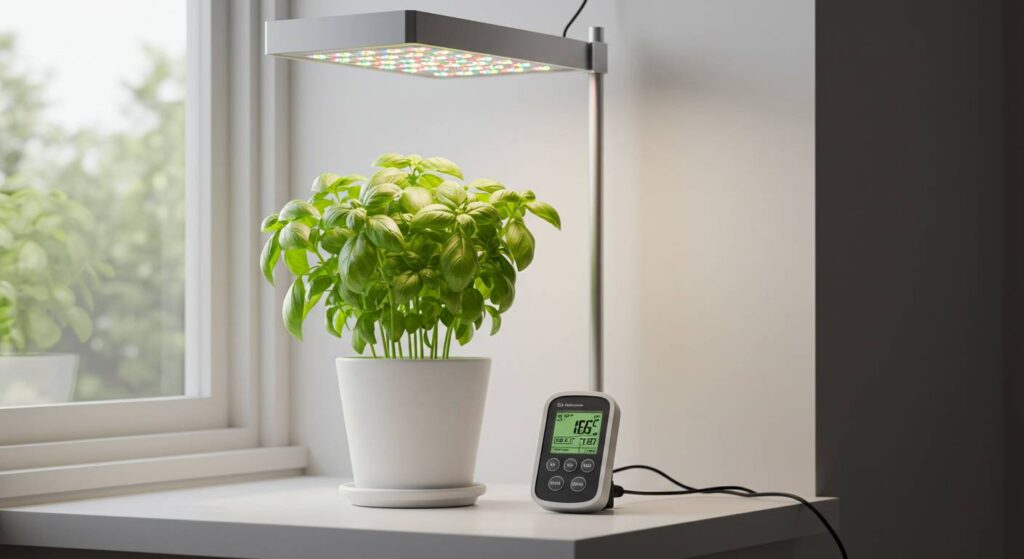
Indoor Basil Pot: Lighting and Temperature
Lighting and temperature are crucial for successful indoor basil growing. As I mentioned earlier, basil needs at least 6-8 hours of sunlight per day. If you don’t have enough natural light, use a grow light. The ideal temperature range for basil is between 60-80 degrees Fahrenheit.
Avoid placing your basil near drafts or heat sources, as this can stress the plant. A stable environment is key to keeping your indoor basil pot happy.
Basil Pot Setup for Indoor Growing
Setting up your basil pot setup for indoor growing is pretty straightforward. Choose a pot that’s the right size for your plant and has drainage holes. Use a good quality potting mix that’s well-draining. Place the pot in a sunny location or under a grow light.
Water thoroughly when the top inch of soil feels dry. Fertilize regularly. With a little care and attention, your indoor basil will thrive.
Outdoor Basil Pot: Maximizing Growth
Basil Growing Guide for Pots Outdoors
Basil growing guide for pots outdoors is all about maximizing sunlight and providing good drainage. Choose a spot that gets at least 6-8 hours of sunlight per day. Make sure your pot has drainage holes, and use a well-draining potting mix.
Water thoroughly when the top inch of soil feels dry. Fertilize regularly. With these basic guidelines, your outdoor basil will flourish.
Planting Basil in a Flowerpot for Outdoor Use
Planting basil in a flowerpot for outdoor use is a great way to add beauty and fragrance to your patio or balcony. Choose a flowerpot that’s at least 6-8 inches in diameter and depth. Use a well-draining potting mix.
Plant your basil seedlings or seeds according to the instructions. Water thoroughly and place the pot in a sunny spot. You can even mix basil with other flowering plants for a beautiful and useful display.
Container Basil Growing: Weather Protection
While basil loves the sun, it can be sensitive to extreme weather conditions. In very hot climates, you might need to provide some afternoon shade to prevent the leaves from scorching. If you live in an area with strong winds, you might need to move your pots to a sheltered location.
And if a frost is expected, you’ll need to bring your pots indoors. Protecting your container basil growing from the elements will help it thrive.
Basil Planting in Pots: Frequently Asked Questions
How Often Should I Water Basil in a Pot?
The frequency of watering depends on several factors, including the weather, the size of your pot, and the type of soil you’re using. As a general rule, water your basil when the top inch of soil feels dry to the touch. Avoid overwatering, as this can lead to root rot. It’s better to err on the side of underwatering than overwatering.
When is the Best Time for Starting Basil in a Pot?
The best time for starting basil in a pot is after the last frost. Basil is a warm-weather herb, and it doesn’t tolerate cold temperatures. If you’re starting from seeds, you can start them indoors a few weeks before the last frost. If you’re buying seedlings, wait until the weather is consistently warm before planting them outdoors.
What are the Signs of an Unhealthy Basil Plant in a Pot?
Signs of an unhealthy basil plant include yellowing leaves, wilting leaves, stunted growth, and the presence of pests or diseases. Yellowing leaves can indicate overwatering or underwatering. Wilting leaves can be a sign of heat stress or lack of water. If you notice any of these signs, take action promptly to address the issue.
Conclusion: Enjoying Your Homegrown Basil
There you have it! A complete guide to how to grow basil in a pot. From choosing the right pot and soil to watering, fertilizing, and harvesting, I’ve covered everything you need to know to grow your fresh basil. It’s a rewarding experience to watch your little plants grow into fragrant, leafy herbs. And the taste of homegrown basil is simply unbeatable. So, go ahead and give it a try. You might just discover your new favorite hobby!


